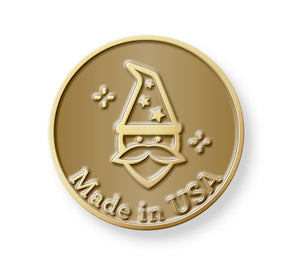Members of the U.S. Navy wear badges, insignia, and pins issued by the Department of the Navy. The Navy issues them to honor service members who obtain certain honors or earn selected accomplishments or qualifications. Both reserve and active duty personnel wear them proudly. Most badges and insignia pins from the Navy are also worn by members of the Marine Corps. Naturally, these badges and insignia have changed over time. The Navy draws a distinction between badges and insignia. Naval badges are limited to identification badges and those awarded for marksmanship, while "insignia" is the term for everything else, including things that are pinned onto formal uniforms and the tape strips sewn onto Navy work uniforms. The badges and insignia issued by the Navy have changed somewhat over the years, in part because jobs, roles, and ranks have changed over time. Some of the badges and insignia issued to Navy service members before and during World War II are no longer in use. Commemorative custom pins and coins may still be available and sought after by collectors.
The Navy Before and During World War II
The U.S. Navy was founded during a session of the Second Continental Congress on Oct. 13, 1775. Most military historians divide the history of the Navy into two distinct periods. The old Navy covers the founding of the military branch and its innovation in using ironclads in the 1860s. During this period, the Navy was a small branch of the Armed Forces. The new Navy period begins with the modernization of the Navy that began in the 1880s. Because of this modernization effort, by the 1920s, the United States Navy was larger than the United Kingdom's Royal Navy, and by 1943, the U.S. Navy had the largest collection of fighting ships and sailors in the world. Its size, strength, and aptitude meant that it was a vital part of the United States' war plans, especially in the Pacific Theater. The Navy fought many crucial, historic battles during the war, including the Battle of Midway. In the European Theater, the Navy was crucial to the efficient movement of troops. World War II officially ended on the USS Missouri when Japanese government officials signed the Instrument of Surrender on Sept. 2, 1945.
Naval Badges During World War II
There are two types of Naval badges: identification badges and those awarded for marksmanship. Badges identify rank, job, and even where a person is assigned. During World War II, that meant Naval service members assigned to the War Department had a badge that identified them as part of that office. Those badges were worn on the left breast pocket beneath any medals on formal uniforms, and on other uniforms, they were worn on the center of the left pocket. Command badges were issued to senior enlisted members of the Navy and were also worn on the left. If service members were issued two badges that were both assigned to the same place on the uniform, they omitted the lower-ranking badge and only wore the higher-ranking badge.
There were (and are) many badges awarded to Naval sailors and officers for marksmanship. The Civilian Marksmanship Program (CMP) was founded in 1903 and works with the Navy to administer sharpshooting competitions and award the badges, along with trophies, pins, and other awards. Like all other badges and insignia, there were specified places on each type of uniform where the badges could be worn.
Naval Insignia During World War II
Insignia served to relay multiple pieces of information about the status of the sailor or officer and their history within the organization. For command officers, their insignia displayed if they were assigned to a ship or had land-based duties. Warfare insignia indicated if a sailor was assigned to a submarine, flew a plane, or worked with special operations. The design of the submarine insignia actually dates back to the 1920s and is still in use today. The Naval aviator insignia was first designed in 1917 and is also still in use today. Warfare insignia would (and still does) take precedence over "other qualification" insignia to display if someone was a parachutist, a pilot, or held another specialized job.
During wartime, sometimes, there was a difference between regulations and how things were done regarding insignia. For example, graduates of the U.S. Navy Parachute Rigger School who were Marines were issued a silver Army Parachute Rigger badge but would often wear the Navy gold Parachute Rigger badge instead because it looked nicer on their uniform. It wasn't until 1963 that the regulations were adjusted to make the Navy gold badge the official insignia for both the Navy and Marine Corps.
Commemorating Navy Service with Custom Pins, Keychains, and Coins
Pins, badges, and insignia hold great importance in commemorating the service and achievements of U.S. Navy personnel. These symbols used on custom pins, keychains, and engraved coins serve as visible representations of the skills, accomplishments, and sacrifices made by those who have served. They are an integral part of Navy culture and tradition, playing a significant role in fostering pride, unity, and identity among sailors. These symbols are far more than decorative items. For sailors, wearing them is a powerful way to reflect on their personal accomplishments, their unit’s heritage, and the Navy’s enduring legacy.
- The Birth of the Navy of the United States
- 11 Facts You May Not Know About the U.S. Navy
- A Brief List of Old, Obscure, and Obsolete U.S. Navy Jobs
- The U.S. Navy in World War II
- Medal of Honor Recipients of World War II
- Navy and Marine Corps Medal
- A History of Sea Service Ranks and Titles
- Insignia Pins of the U.S. Navy
- U.S. Navy Ranks and Insignia
- On Parade, Into Battle: Women's Military Uniforms
- U.S. Navy Enlisted Rating Insignia of World War II
- Better Know Your Service Member










































